We’ve spent a few weeks swapping heads, dialing snares and chasing that sweet spot between bite and control - and the Evans Genera HD Dry 14″ has been in rotation for most of it. On paper it reads like a drummer’s Swiss Army knife: a coated two-ply construction (5 mil outer,7.5 mil inner), a floating 2 mil overtone-control ring, precision vent holes around the edge, and Evans’ Level 360 collar for easier seating and tuning. In practice it’s a surprisingly focused, studio-pleasant head that still barks when you need it to on stage.
In our sessions the HD Dry delivered an aggressive rimshot attack with noticeably reduced stray harmonics and shorter sustain, thanks to the venting and the underside ring. Tuning felt more straightforward than some other double-ply heads we’ve used, and the tonal range stayed usable across higher and lower tuning points. It doesn’t behave like a thin single-ply-there’s weight and presence-but it trims the ring you sometimes get from thicker heads. Made in the USA by a company with decades of drum-head expertise, it promises consistency; what we wanted to know was how that promise translated into real-world sound and feel.
In this review we’ll walk through tone, response, tuning behavior, live vs. studio performance, and durability so you can decide whether the Genera HD Dry belongs on your snare.
Our Hands-on Overview of the Evans genera HD 14 Snare Head

We found this HD Dry snare head instantly responsive – rimshots hit with an aggressive snap while the overall tone stays balanced and focused. The combination of two plies (a 5mil outer film and a 7.5mil inner film) delivers a fat attack with surprisingly minimal sustain,and the floating 2mil overtone-control ring on the underside keeps stray overtones in check so the drum “barks” without ringing. What stood out during our session were the small precision-drilled vent holes around the edge: they noticeably tighten the sound and eliminate unwanted harmonics,making it as cozy on a loud stage as it is in a controlled studio surroundings. Key performance highlights:
- Two plies: 5mil outer / 7.5mil inner for a punchy, balanced response
- Overtone control: 2mil floating ring to tame excess overtones
- Vent holes: tighten sustain and reduce stray harmonics
- Level 360 technology: easier seating and a wider tuning range
Across styles – from rock and metal to jazz and country – we appreciated how quickly the head tuned in and how consistent the sound stayed under different dynamics. The coated surface gives a warm,studio-ready character while remaining durable for gigging; plus,being crafted in the USA adds reassurance about build quality. Below is a rapid spec snapshot we used to compare it with other heads during testing:
| Spec | Detail |
|---|---|
| Ply Construction | 5mil + 7.5mil |
| Overtone Ring | 2mil (floating) |
| Ventilation | Precision-drilled edge holes |
| Diameter / Finish | 14″ / Coated |
Check current price & availability
Features That Shaped Our Sound: Vent Holes, Dual Ply Coating, and Overtone Control
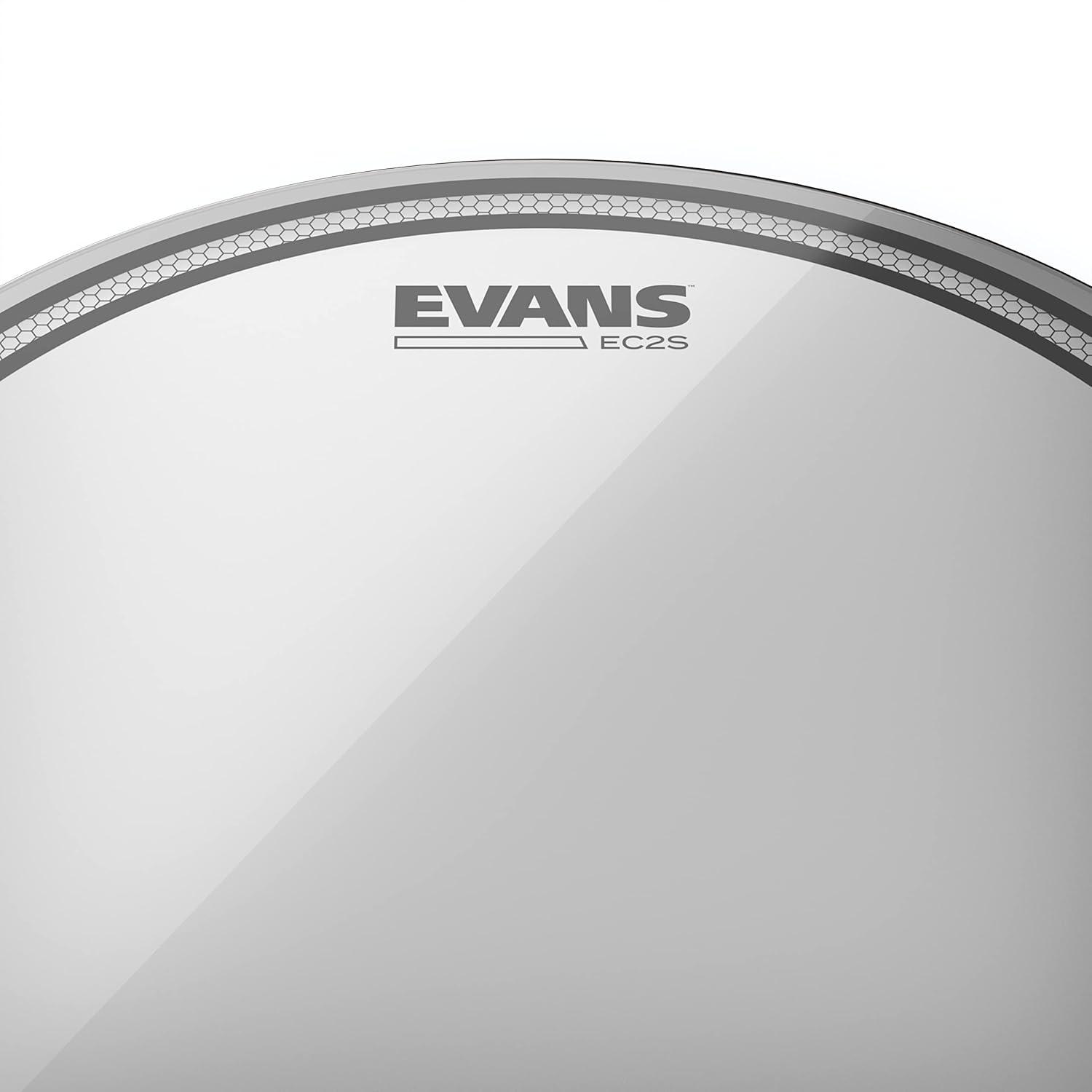
We immediately noticed how the combination of the dual-ply construction and precision venting reshaped our kit’s personality. The outer 5mil ply gives a crisp, cutting rimshot while the heavier 7.5mil inner ply adds body and balance, so we get attack without flabbiness. Around the edge, the small, precision-drilled vent holes actively eliminate stray harmonics and tighten sustain, which translates to a focused backbeat whether we’re playing rock or jazz. Results we heard:
- Tighter,more controlled sustain
- Clear,aggressive rimshot with balanced response
- Reduced stray overtones for studio-friendly takes
| Component | Thickness | Effect |
|---|---|---|
| Outer ply | 5mil | Crisp attack |
| Inner ply | 7.5mil | Full body |
| Vent holes | Precision-drilled | Tighter sustain |
We also appreciated the subtle engineering on the underside: a 2mil overtone control ring that ”floats” with the head and trims excess harmonics without deadening the tone. Pair that with the Level 360 collar and tuning becomes less of a fight-heads seat evenly, giving us a wider tonal range and quicker, more consistent tuning during rehearsals and sessions. The overall character is confident and articulate-this snare barks on stage yet sits nicely on close-mic studio tracks. if you want to hear what these features do to your sound, check it out for yourself: Buy on Amazon
Detailed Impressions and Our Recommendations for Tuning, Sustain Management, and Musical Contexts
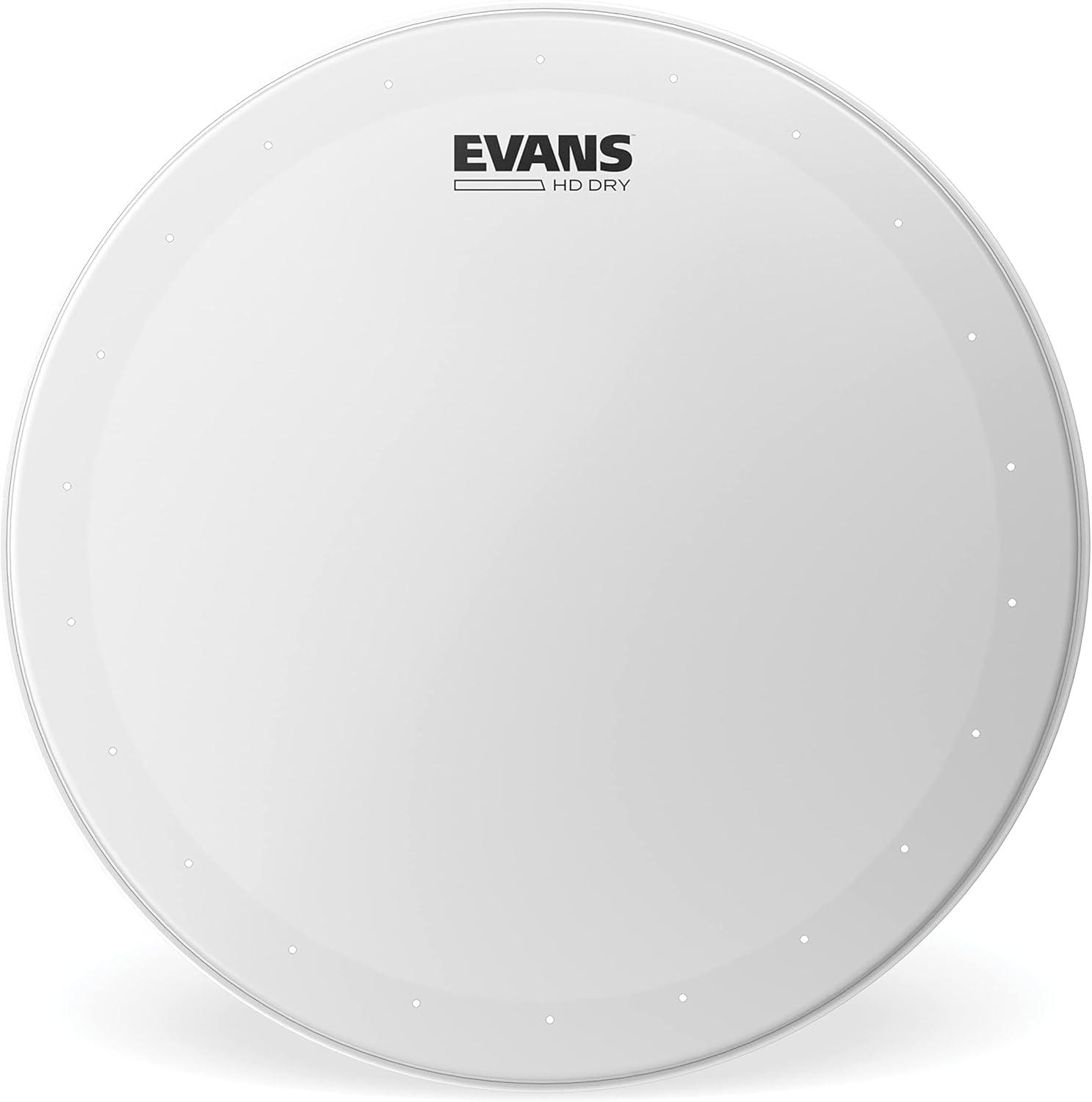
We found the construction – two plies (a 5mil outer and a 7.5mil inner) plus a floating 2mil overtone-control ring and precision-drilled vent holes – gives an immediate, focused snap with surprisingly controllable sustain.In practice that means aggressive rimshots and a balanced response without the usual bloom; the venting and underside ring do most of the heavy lifting, so we rarely needed heavy muffling. The Level 360 seating also makes head mounting and tuning noticeably quicker, giving us a wider tonal range to dial in everything from tight, cutting hits to warmer, fatter attacks depending on head tension and stroke placement.
- Tuning tips: Start medium-battery / medium-resonant, then tighten batter for more snap or lower it slightly for a fatter attack.
- Sustain management: Use the vent holes and the floating ring as the primary control – add light internal damping only if you want an ultra-short, studio-dead sound.
- Playing feel: the head barks live but tracks beautifully in the studio; rimshots stay articulate while center hits remain focused.
For musical contexts we lean on this head for rock and metal when we want a pronounced attack that cuts through mixes, and for country or some jazz settings when a focused, warm tone is preferred over washier overtones. When we need extreme shortness for studio snapshots we tune higher and add a touch of internal padding; for open, roomy-sounding live snare work we keep it a touch lower and let the venting do the sustaining control.Below is a quick reference to help choose tuning targets by style – and if you want to grab one to try these adjustments yourself, check it out hear: Buy on Amazon – See Price & Reviews
- Live rock/metal: Tight batter, medium-high resonant, minimal damping.
- Studio recording: Medium batter, slightly damped resonant, subtle internal muffling if needed.
- Country/jazz: Slightly lower tuning for body with focused rimshots for accents.
| Tuning | Character |
|---|---|
| High batter | Short, cutting, bark |
| Medium batter | Balanced attack and body |
| Low batter | Warm, fat, less snap |
Pros & Cons
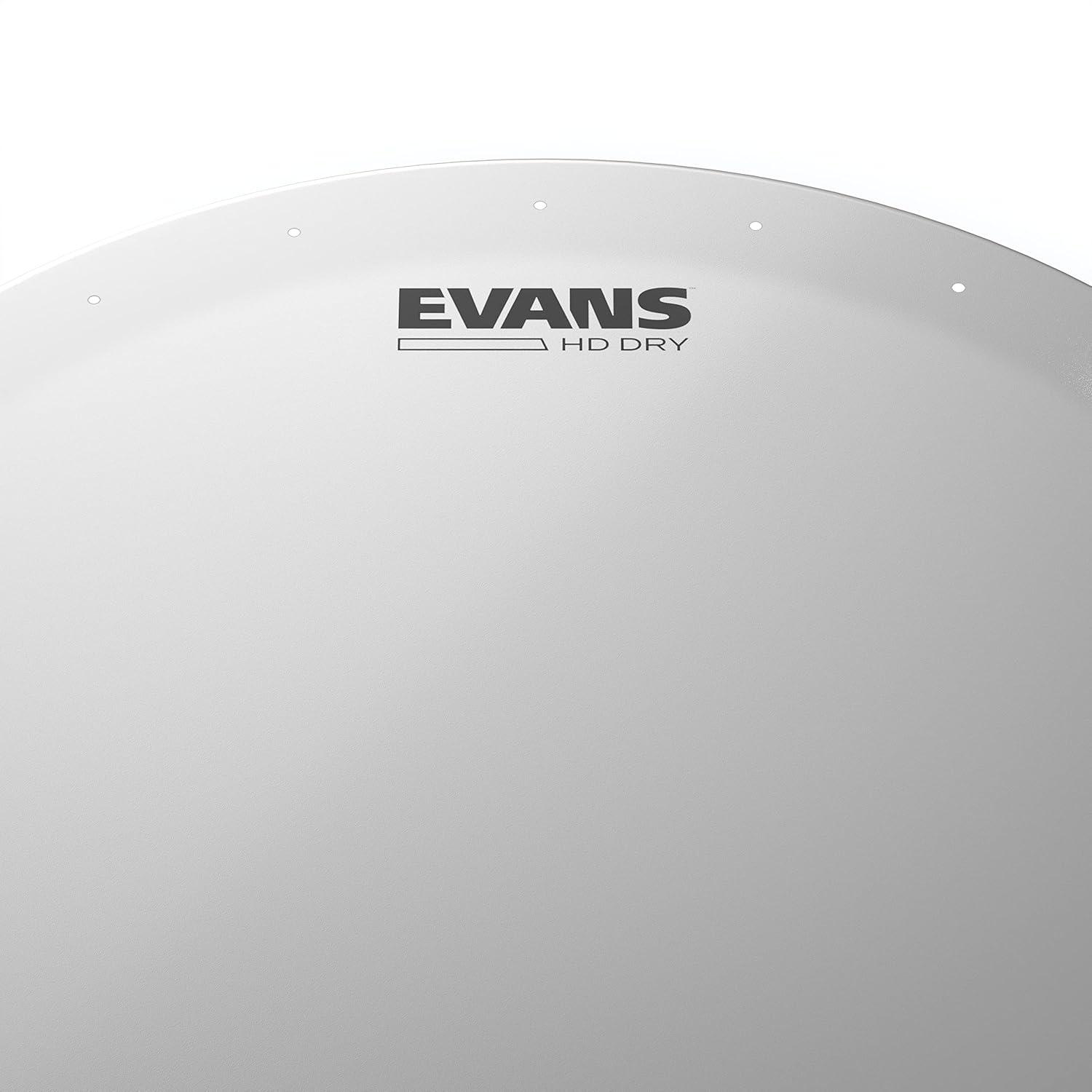
Pros & Cons
After spending time with the Evans Genera HD Dry, here are the highlights and the trade-offs we noticed - short, honest, and straight to the groove.
Pros
- Tight, barky attack: The two plies and 5/7.5mil construction give rimshots real snap – perfect for cutting through a mix.
- Controlled sustain & overtones: The floating 2mil overtone ring plus precision vent holes clean up stray harmonics without killing tone.
- Studio-ready tuning: Level 360 seating makes tuning easier and expands usable tonal range.
- Versatile across genres: Rock, country, metal, and many styles benefit from its focused, aggressive character.
- Consistent quality: Thoughtfully made in the USA – reliable build and repeatable results.
Cons
- May be too dry for some tastes: Players who want long, ringing sustain or lush harmonic wash might find it restrictive.
- Less delicate feel: Two plies sacrifice some ultra-sensitive response for durability and attack – brushes and whisper-soft playing lose a bit of nuance.
- Coating personality: The coated surface warms the tone but can change brush feel and wear differently than clear heads.
- Specific sound footprint: The focused “bark” is great if that’s the goal – but it’s not a one-head-fits-every-mood solution.
| Quick Snapshot – Pros | Quick Snapshot - Cons |
|---|---|
| Attack: Sharp & cutting | Sustain: Shorter, more controlled |
| Tuning: Easier with Level 360 | Feel: Less sensitive for ultra-soft playing |
| Use: Live & studio friendly | tone: Not ideal for very resonant, open sounds |
If we want a tight, barky snare that sits crisply in the mix and behaves beautifully in the studio, the Genera HD Dry is a compelling choice. If our priority is long sustain, shimmering overtones, or the absolute softest brush response, we might look elsewhere or use this head alongside a different one for variety.
Q&A
Q: What exactly does “Dry” mean on the Evans Genera HD Dry?
A: We take “Dry” to mean tightly focused and low in unwanted sustain. The HD Dry’s vent holes and floating overtone ring work together to choke stray harmonics and shorten the decay, so the result is a concise, barky snare voice rather than a long, ringing one.
Q: How do the vent holes change the sound?
A: The tiny precision-drilled vent holes around the edge act like little sustain-cutters. In our experience they eliminate weird edge harmonics and give the head a tighter, more controlled response-especially useful when you need the snare to sit cleanly in a band mix.
Q: What does the 2mil overtone control ring do?
A: That ring ”floats” under the head and suppresses excessive overtones without killing attack. We found it keeps the tone focused and musical-enough meat for rimshots and backbeats, but not a wash of sustain that muddies the kit.
Q: What benefit does Level 360 technology provide?
A: Level 360 lets the head seat itself more evenly in the hoop,which makes tuning quicker and more predictable.We noticed a wider usable pitch range and fewer stubborn dead spots when tuning compared with heads that don’t have the 360 collar.
Q: Is this head better for live gigs or studio work?
A: Both.We love how it barks live and cuts through cymbals, and the controlled overtones and predictable sustain make it very studio-friendly. If you record frequently, the HD Dry often needs little additional damping.
Q: What genres suit this head best?
A: It’s genuinely versatile. We’ve used it across rock, pop, country, funk, and even tighter metal settings. Jazz players who want a focused, articulate backbeat can make good use of it too-so long as they don’t want that classic long, open jazz snare ring.
Q: How should we tune it to get that “tight & barky” sound?
A: Start by seating the head with level 360, bring all lugs to an even, medium-high tension, then tune the batter a bit higher than the resonant head. Aim for a crisp rimshot and a short decay. Small incremental adjustments do the trick-tighten the batter for more bark,lower it for a fatter,less cutting sound.
Q: Do we need additional muffling with this head?
A: Usually no. The overtone ring and vent holes handle a lot of the damping work.If you want an ultra-short thud for certain songs, a small piece of tape, a gel, or a felt ring will do the job without over-deadening the tone.
Q: How durable is the Genera HD Dry?
A: The two plies (5mil outer + 7.5mil inner) give more durability than a single-ply head. We found it stands up well to heavier playing and rimshots, but like all heads, lifespan depends on playing style and frequency of use.
Q: Will this head fit all 14″ snares?
A: It fits standard 14″ hoops and shell diameters. The Level 360 collar also helps the head seat consistently across different hoop types and typical shell depths, but always check lug and hoop compatibility on non-standard hardware.
Q: how does the Genera HD Dry compare to single-ply heads?
A: Compared with single-ply heads, the HD Dry is thicker, more focused, and more durable. We get a stronger attack and less sensitivity-great for cutting and durability-but you’ll sacrifice some of the paper-like snare sensitivity single-ply lovers chase.
Q: Any quick setup tips we should know?
A: Yes-our simple routine:
– Hand-stretch the new head around the hoop to seat it.- Finger-tighten all lugs, then use a star pattern to bring them up evenly.
– Let the head sit for a few minutes, re-seat if necessary, then fine-tune.
– Tune batter slightly higher than resonant for bark; lower both for warmth.- If any stray ring appears,try tiny adjustments around the offending lug rather than big swings.
Q: Bottom line-should we buy it?
A: If we want a 14″ snare head that’s versatile, easy to tune, aggressive on rimshots, and naturally controlled for both stage and studio, the Genera HD Dry is a smart pick. It delivers the “tight & barky” character it promises, with the durability and tuning predictability we look for.
Reveal the Remarkable
In short, the Evans Genera HD Dry gives us a taut, barky snare voice that translates well from club stages to quiet studio rooms. The two plies and floating 2mil overtone ring deliver a focused attack and controlled sustain,while the precision vent holes and Level 360 collar make tuning and harmonic control easier than most heads in this range. It’s a versatile, reliably made option for drummers who want a tight, present snare without chasing excessive overtones.
if you want a snare head that bites on rimshots, tightens up stray harmonics, and stays studio-ready, this one earns our recommendation - with the caveat that players seeking long, ringing sustain should consider their musical goals first. it’s a dependable choice for rock, pop, country, metal and jazz drummers looking for punch and clarity.Hear the bark for yourself – check current price and availability on Amazon:
Hear the Evans Genera HD Dry on Amazon

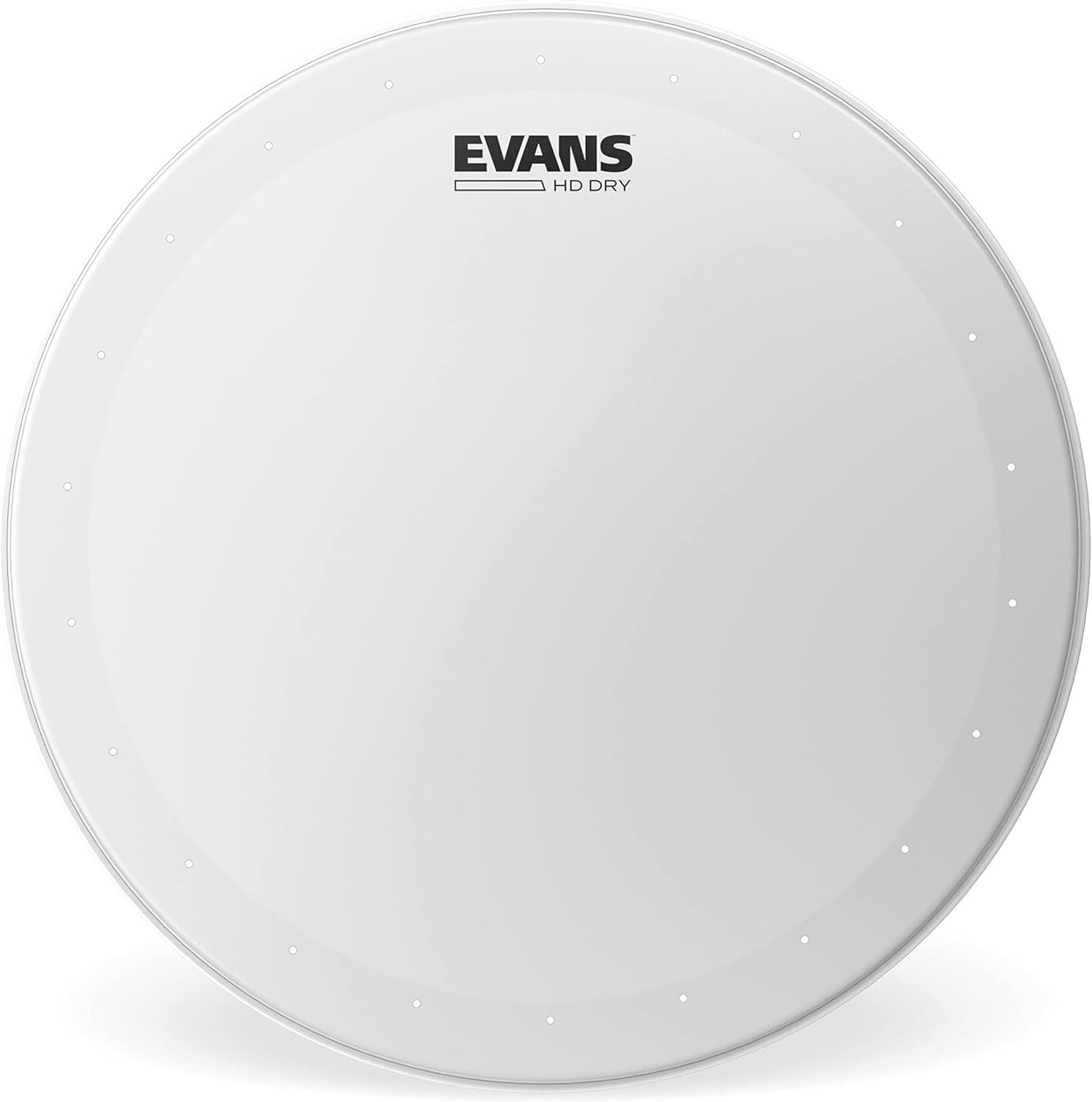
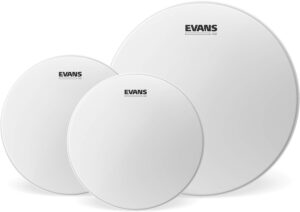
Reviews
There are no reviews yet.